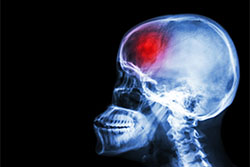
A monthly health newsletter for patients |
May 2017 |
|
|
|
Melanoma: A Skin Condition that Needs to be Taken Seriously
Sun damage can result in melanoma “Of all skin cancers, melanoma is the most serious. It develops within the cells that produce melanin — the pigment that determines skin color,” says Larisa Geskin, MD, Director of the Comprehensive Skin Cancer Center at NewYork-Presbyterian/Columbia University Medical Center. What may start out as harmless skin discoloration or a mole can indeed be a melanoma, potentially fatal if left unchecked and untreated, running the risk of spreading to the internal organs. Melanomas often look like moles, and some develop from moles. Most of them are black or brown, but they can also be pink, red, purple, blue or white. Melanoma accounts for less than one percent of skin cancer cases, but the vast majority of skin cancer deaths according to the Skin Cancer Foundation. “That’s why it is so important to see a dermatologist if you notice any unusual marks on your skin,” says Dr. Geskin. “Only early detection and treatment can make this skin condition curable.” While no one is exempt from developing melanoma, certain factors can facilitate its development — chief among them being exposure to the sun. Particularly susceptible are those with fair skin, many moles, or when there is a history of melanoma in the family. Simple ways to save your skin:
Dr. Geskin also advises doing skin self-examination from head to toe every six to eight weeks. “It’s always important to examine your skin regularly and check for moles that have changed in shape, size or color. Report any changes to your doctor.” For more information, visit nyp.org. |
|
Teen Anxiety and Separation Issues: There is Help
While there may be a grain of truth in these stereotypes, there is a larger component at work. Anxiety is a very real condition for many teens (often present in childhood) as the pressures of coming of age, going off to college, and even laying the groundwork for the rest of their lives can cause true emotional turmoil. According to John Walkup, MD, Director of the Division of Child and Adolescent Psychiatry at NewYork-Presbyterian, “Anxiety disorders constitute the most prevalent class of mental health problems in adolescents. Some of these include separation anxiety, generalized anxiety, and social anxiety disorders.” While it’s natural for adolescents to experience anxiety to varying degrees at one time or another, some are unable to cope with even the most routine aspects of life. “You have a situation where the anxiety is out of proportion to the matter at hand, such as heading off to school (separation problems), apprehension about the future (generalized worry), or being around new people (social anxiety),” says Dr. Walkup. “Adolescents with the disorder use avoidance to deal with every situation that triggers an anxious response, which can make the prospect of leaving home and going off to college especially daunting for the individual and his or her family,” says Dr. Walkup. Anxiety disorders typically start in childhood. Affected children tend to be hyper-vigilant about the outside world and their inner world. They react to new situations not with curiosity and engagement but with a sense that these conditions are potentially threatening. “They cope by avoiding because anything novel is potentially threatening,” says Dr. Walkup. When these behaviors in childhood go unaddressed, individuals do not develop the right set of coping and adaption skills. As the academic, employment and social functioning pressures increase later in life, the anxious young adult finds himself struggling to function independently. As with most emotional and physical conditions, the sooner the disorder is treated, the better the outcome. “It is best to work on this problem when it begins in childhood,” says Dr. Walkup. “That said, we have developed treatments to meet the unique needs of older adolescents and young adults with anxiety disorders who are struggling with the transition to independent living.” Despite the high prevalence of anxiety disorders in young adults, only one-third seek treatment. “While we have done a good job of alerting the public about other psychiatric disorders like ADHD and teen depression, we are way behind in educating the public about the anxiety disorders and their role in preventing adolescents from becoming independent adults.” The Youth Anxiety Center is a clinical and research collaboration of NewYork-Presbyterian Hospital, Columbia College of Physicians and Surgeons and Weill Cornell Medical College with a goal of improving outcomes and understanding how anxiety affects youth as they transition out of the home to college or work, and to independent living. “While our patients learn to manage anxiety through individual and group therapy, their parents are also assisted in setting goals, communicating, and learning how to let go,’’ says Dr. Walkup. “The goal is to get the adolescent to take on and manage challenges on their own, with professional guidance to assist them along the way.” For more information on our services, visit nyp.org or call 877-NYP-WELL to find a physician. |
|
 |
To change your mailing preferences or unsubscribe, click here. You may also unsubscribe by replying to this email with the word "unsubscribe" in the SUBJECT LINE. |
 In the business world, you’ll often hear the phrase “time is money.” But in the medical world, particularly when it comes to treating victims of stroke, you’ll hear the phrase “time is the brain,” emphasizing that human nerve tissue is rapidly lost as stroke progresses, making immediate treatment critical.
In the business world, you’ll often hear the phrase “time is money.” But in the medical world, particularly when it comes to treating victims of stroke, you’ll hear the phrase “time is the brain,” emphasizing that human nerve tissue is rapidly lost as stroke progresses, making immediate treatment critical.



 There is a great comfort and a sense of well-being that comes from basking in the sun. Its warming rays are satisfying and deliver a healthy-looking tan that adds to one’s appearance. What seems like benefits derived from sunning, however, often have unintended and dangerous consequences, when overexposure can cause severe damage to the skin.
There is a great comfort and a sense of well-being that comes from basking in the sun. Its warming rays are satisfying and deliver a healthy-looking tan that adds to one’s appearance. What seems like benefits derived from sunning, however, often have unintended and dangerous consequences, when overexposure can cause severe damage to the skin. When it comes to adolescents, society and Hollywood tend to perpetuate the popular stereotypes that go along with them—that they are everything from irresponsible party animals to alienated rebels plagued with teenage angst.
When it comes to adolescents, society and Hollywood tend to perpetuate the popular stereotypes that go along with them—that they are everything from irresponsible party animals to alienated rebels plagued with teenage angst. When the Tin Man in the Wizard of Oz experienced joint stiffness, a few squirts of the oil can, and he was good to go. If only it were that simple for human beings.
When the Tin Man in the Wizard of Oz experienced joint stiffness, a few squirts of the oil can, and he was good to go. If only it were that simple for human beings.